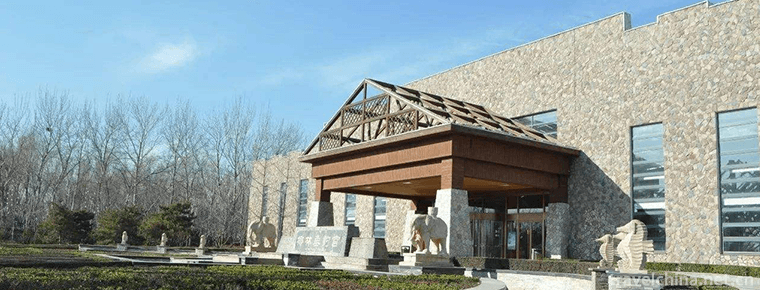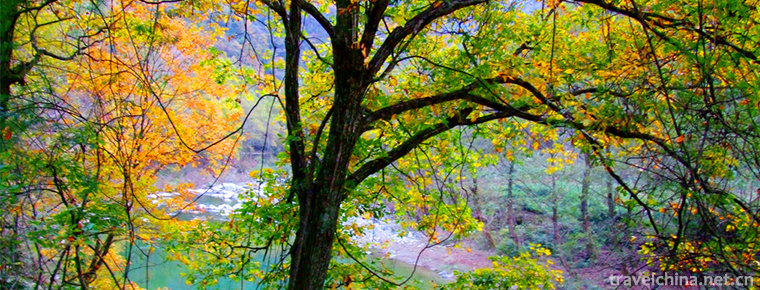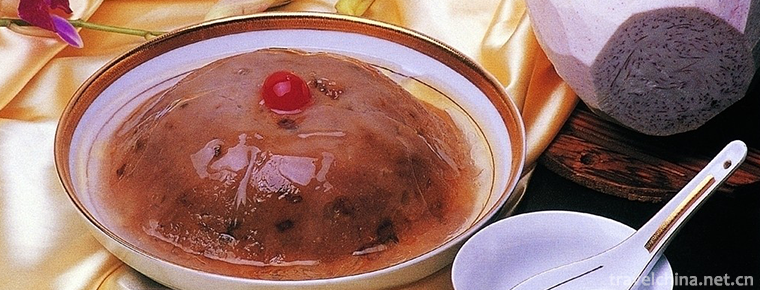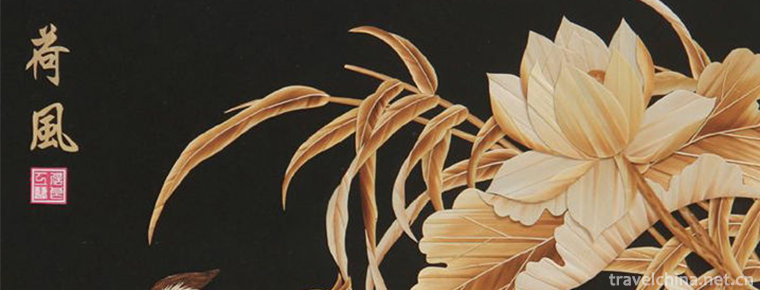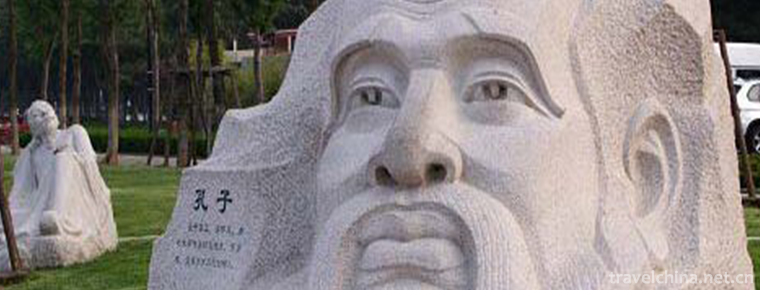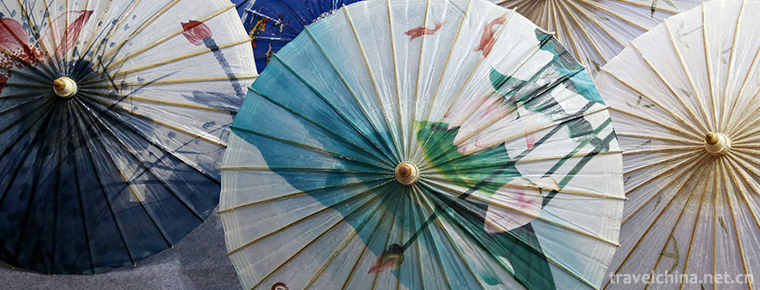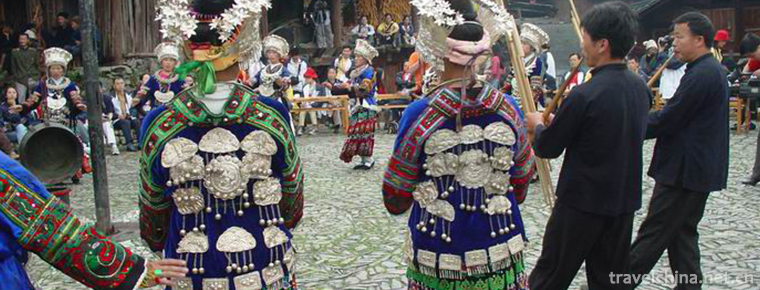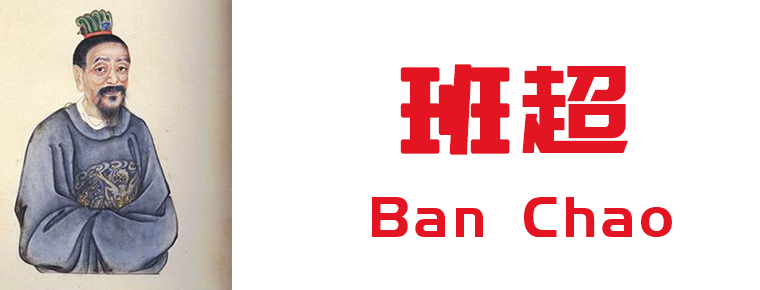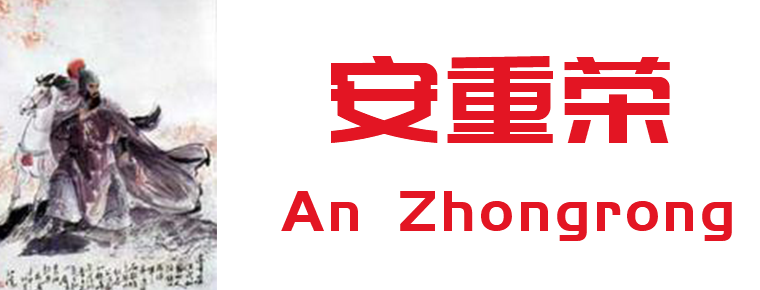Jin Opera
Jin Opera
Jin Opera is Shanxi Bangzi, an important drama in northern China, also known as Zhonglu Opera, Chinese traditional opera. It was named after Fenyang, Xiaoyi, Qixian, Taigu and Taiyuan, which sprang up in central Shanxi.
The characteristics of Jin Opera are melodic, smooth, melodious, friendly, clear Tao and Bai, with strong local flavor and unique style in Jinzhong area.
On May 20, 2006, Jin Opera was approved by the State Council of the People's Republic of China to be included in the first batch of national intangible cultural heritage lists, numbered IV-18.
Brief history of drama
origin
Shanxi is one of the birthplaces of Chinese opera art. Bangzi of Puzhou, which appeared in the Ming Dynasty, gradually developed into four major operas in Shanxi today: Pu Opera, Jin Opera, Bangzi of North Road and Bangzi of Shangdang.
Jin Opera, Chinese local opera, Shanxi Bangzi one of the four major types of opera, also known as Shanxi Bangzi, Chinese traditional opera. Born in the middle of Shanxi Province, it is also called "Zhonglu Bangzi", also known as "Zhongxi Opera", which is mainly popular in parts of Shanxi Province, northern Shanxi Province, northern Shaanxi Province, Inner Mongolia and Hebei Province. Generally speaking, it is a part of Chengzhou, Lv Liang, Zhang Hu and a part of Wutai.
In the process of development, it absorbs folk songs, Yangko and other folk art rhymes in Jinzhong area, with unique style.
There are two ways to adjust the upper road to the lower road, the upper road to the North Road Bangzi, and the lower road to the middle road Bangzi. After the Republic of China, the Bangzi of Zhonglu flourished, so Shanxi Bangzi was used to refer to the Bangzi of Zhonglu, which was called Jin Opera after the founding of the People's Republic of China. During the last hundred years of the late Qing Dynasty and the early Republic of China, the development of Jin Opera reached its peak. At that time, there were many classes and societies and talented people, especially after the emergence of the first generation of actresses represented by Ding Guoxian, the art of Jin Opera was promoted to a new stage.
Jin Opera retains the generous and passionate artistic characteristics of Bangzi in Puzhou, while forming a euphemistic and delicate Lyric style.
The origin of Bangzi in Zhonglu should be in Xianfeng period of Qing Dynasty . In the early years of Daoguang, Puzhou Bangzi, which was called Shanxi Bangzi at that time, revived again. The so-called "Emperor Daoguang Deng Longting, Shanxi Bangzi is popular again." Pu Bangbei went up to perform in the area of Jinzhong and Taiyuan, which not only stirred Taiyuan, but also shocked Beijing. It also catered to the entertainment requirements of a group of wealthy businessmen rising in the Central Road area, so they contracted. Inviting Pu Ban Society to perform in Zhonglu is the beginning of the rich businessmen in Zhonglu undertaking the theatre, but the theatre is still Pu opera. Its representative classes include Wanhe class in Pingyao County, Xiaopingyao class and Jiqing class in Jiexiu County.
In the early years of Xianfeng, Pu Bang began to fall into the cold. As a result, there appeared a relatively vacant period of theatrical activities in the middle road area. This was disappointing to the people who loved the theatre, especially the rich businessmen. So a few people began to invite idle scholars, ticket-holders, Yangge and shadow artists to organize seminars to create their own theatre. By the middle and late period of Xianfeng, after the efforts of many groups, finally on the basis of inheriting Pu Bang rhyme and Gong and drum meridian points, combined with the singing characteristics of Zhonglu Yangko, the prototype class club of Zhonglu Bangzi was initially formed, and pilot performances began. Among them, Yuci Heidian Class and Qixian Sanqing Class are representative. Besides Pubang artists, Yangko artists and shadow-play artists, there are also drummers, shop assistants, miners and ticket-holders.
In the early years of Tongzhi, Shanxi's social order improved.
The emergence of a new type of Bangzi in the middle road has also been favored by more wealthy businessmen and financiers. So we set up the upper and lower Liyuan Class, the Four Comedy Class, the Four Xing Class and the Four Qing Class successively. In the performance practice, we learn from each other and constantly improve each other, so that the singing and the cultural and military scenes are becoming more and more perfect. We also learn from the experience of the foreign Opera management classes, so that the opera troupes gradually become standardized. Opera troupe personnel, in addition to the Wenwuchang reserved middle-road artists, other actors are mostly hired from Puzhou with high salaries, so there are folk proverbs: "Qi Tainizi, Puzhou Wanzi". Theatre troupes are not commercial in nature, and their profits and losses are entirely at the head of the troupe. Just everywhere, the wooden tiger plate with the name of the theatre troupe carried by a certain wealthy owner in a certain county is placed on the front desk to show boast, and the name is inscribed on the backstage wall. These stage inscriptions have a wide range of contents and become the golden stone evidence for the study of the development history of Jin Opera today.
With the increasingly stereotyped Bangzi, it has aroused the interest of small and medium-sized wealthy owners and middle-sized businessmen. They also invited artists or children from Puzhou to set up classes. By the end of Tongzhi, Bangzi Ban Society of Zhonglu had taken shape in a few prefectures and counties of Shanxi Zhonglu and Beilu. The excellent performances of the artists left a deep impression on the audience. Today, there are still "Four Joy Classes" in Jinzhong, which are good plays, bald red, vomiting ugliness and covering Shaanxi. Ginseng doll, big mouth ugly, a flag behind. "Waiting for opera proverbs to spread.
Brilliant
In the decade of Guangxu, Zhonglu Bangzi rose again, and a new atmosphere emerged for the performances of Zhonglu performers, which changed the old situation of Pubang performers performing Zhonglu performances. From Guangxu 15 years later to the end of Qing Dynasty, Zhonglu Bangzi entered a glorious period. The performances include temple fair play, market play, stage-stepping play, Kaiguang play, commercial play, market-opening play, prayer play, vow-returning play, sacrificial play, wedding, funeral and birthday celebration play and official play. Common villages also sing one Opera a year; large market towns have as many as 5-10 operas a year. Bangzi has become the main type of opera popular with the people of the Middle Road. It also competes with local operas as businessmen hiking in Zhangjiakou, Baotou and Naturalization. During the development of Bangzi in Zhonglu, because of the regional relationship and the different elements of folk art, there are three main schools in the performance program and singing style. They are the road class in Taiyuan Prefecture, the next class in Fenzhou Prefecture, and the East four classes in Pingding and Liaozhou Prefecture. Until the liberation of the three small differences, into one. After the prosperity of Bangzi in Zhonglu, the Silk Bamboo Band in Jiangnan and the Huaqiang Ban in Kyoto basically withdrew from the stage of Zhonglu. Only Pubang occasionally returned, and the momentum has been greatly reduced.
After the Revolution of 1911 , the counties of Zhonglu were once in turmoil, and the rich and powerful mostly took a wait-and-see attitude. Therefore, the successors of Zhonglu Bangzi were mostly replaced by the former Qing Yamen and the elders of the bodyguard bureau. At the same time, the ranks of middle-road artists have grown and the rest of Pubang artists, except the settlers, no longer come to work in the middle-road.
In 5-19 years of the Republic of China (1916-1930), the situation in Shanxi was relatively stable, and Bangzi Zhonglu entered the second glorious period. At this time, Bangzi in the middle of the road, classes and associations stand in great numbers, and schools expand. Not only took root in Yanbei and occupied outside the mouth, but also in the western part of Hebei Province and the northeastern part of Shaanxi Province, as well as in the northern counties under the jurisdiction of Pingyang and Luan prefectures in the province, Banshe has also developed and established, forming a large-scale opera across the five provinces of Shanxi, Shaanxi, Hebei, Suiyuan and Chahar in northern China, thus known as Shanxi Bangzi.
There are many famous actors and there is fierce competition. Zhonglu Bangzi has formed a great situation of talent, strength and competition. The repertoire is varied and full of culture and military skills.
Because of the talent, most of the plays are performed by celebrities.
Common are "June Snow", "Fengyi Pavilion", "Golden Beach", "Shangtaitai", "Legend of White Snake", "Iron Bow Margin", "Baizitu", "Famen Temple" and so on, a total of more than 200 copies, back, out. It can be said that both civil and military are capable and unstoppable. Performing skills, flowers blossom. At this time, the various classes and societies to show new recruits, artists are also singing, doing, reading, playing special effects and other performances in the lead.
Since the 1920s, some of Shanxi Bangzi's veteran artists are still alive, and the stage pattern can maintain the performance of men and women on the same stage. Therefore, three classes of good performances such as Taigu Jinyuan have emerged. In the 24 years of the Republic of China (1935), Buyun Opera Club headed by famous female artist Ding Guoxian and Tangfeng Opera Club headed by Gai Tianhong performed in Beijing, Tianjin, Shanghai and other places, greatly expanding the influence of Shanxi Bangzi, and also exchanged experiences with brothers and artists, enriching themselves. Later, Shanxi Bangzi gradually transformed from a male actor to a female actor. It also brings potential problems: because women's acting can attract more audiences and make more money, there has been a general upsurge in training female artists. Shanxi Bangzi, because of the actor's "Yin prosperous and Yang declining", has gradually stopped or lost many excellent performances such as helmets, hard work, martial arts, face and clown. It has also gradually replaced this northern opera with its own passionate and unrestrained lyrics, singing tunes, and ups and downs, and gradually lost its former style by melodious tunes and lingering schools. The masculinity and clangorous features.
Low tide
After the failure of Yan Xishan and Feng Yuxiang to overthrow Chiang Kai-shek, Shanxi's economy was depressed. Some of Shanxi Bangzi's class clubs went astray, and corruption spread into the theatre, causing typhoon depression, artists'ideological degeneration and artistic level decline, which brought serious difficulties to many artists' lives. At least a few Kunjiao artists suffered misfortunes repeatedly, fell into predicament and could not extricate themselves.
After the Lugouqiao Incident , the Japanese army quickly invaded Shanxi, burning, killing, looting and doing nothing evil, forcing all theatre troupes to disintegrate, artists scattered, some of them died abroad, some of them converted to farming. Only a few people entered the revolutionary base areas of Taihang, Jinsui, Shanxi, Chaji and so on, serving the anti-Japanese military and civilian performances with brand-new features. During more than 10 years before and after the Anti-Japanese War, the disaster suffered by Bangzi in Shanxi Province resulted in the first low tide period in the development history of Jin Opera.
In the anti-Japanese base area established under the leadership of the Communist Party of China, there are many literary and artistic groups singing "Zhonglu Bangzi". The July Opera Club, People's Opera Club, Lv Liang Opera Club, Er Zhong Opera Club, Xinhua Rural Experimental Opera Troupe, Qinyuan Lv Yin Opera Troupe and Taiyue Middle School Amateur Opera Club in Jin Sui Base Area have successively performed "Da Jinzhi", "Anti-Xuzhou", "Lu Wenlong", "Hong Niang Zi", "Thousand Years of Ancient Hatred" and modern opera "Xintunpu", "Blood and Tears Hatred", "Wang Dechao Rent Reduction. 》 And so on, the transplantation staged the new historical drama "Three Strikes Zhujiazhuang" and "Pressing Up to Liangshan" and so on. Musicians such as Chang Sumin specially collected and sorted out the music of Jin Opera. During the War of Liberation, some groups marched into the Northwest with the PLA and went down to the southwest. Some Jin opera workers took root in other provinces and regions, thus further expanding the activities and influence of Bangzi on the middle road.
The founding of New China opened a third glorious period for Bangzi in Shanxi Province. From 1956 to 1958, theatre troupes at or above the county level in most parts of the province were established and improved one after another. The best performers concentrate in Taiyuan, the provincial capital, so Shanxi Bangzi was officially named Jin Opera. The name of the Opera Troupe affiliated to each county was changed to a Jin Opera troupe.
The occurrence of the Cultural Revolution made Jin Opera one of the targets impacted and made Jin Opera go down again. In 1967, the theatre troupe was transformed into a propaganda team for Mao Zedong Thought. After that, the model opera was changed into a unified one, and the performers had to pass the political examination before they could enter the stage. Jin Opera's vitality was badly damaged, which resulted in the second low tide in the history of development.
Development
In the 1980s, the government called for the revitalization of Jin Opera. Theatre troupes at all levels adjusted their troupes, enriched their performers, added their wardrobes, sorted out old plays, and rushed out new ones. In some cases, Jin Opera performances were combined with the current popular forms of literature and art, such as light music, to enhance the performance effect of Jin Opera. At the same time, new artists such as Song Zhuanzhuan, Shijiahua, Cui Jianhua, Li Tianxi, Wang Xiaoping, Wang Erqing, Li Guilian and Sun Hongli have emerged. The repertoires of Xiahe Dong, 15th Guan, Yucian Tears, Crouching Tiger Order , Cutsi Du, Wu Wang Jian and Sanxia Taoyuan have been restored and newly compiled. They have also collected many provincial and city performances and appraisals, and some even performed in Beijing. In addition, a small number of people have won the honorary title of Jin Opera Performing Artist. Some have won the Plum Blossom Prize for Chinese Opera, and some have been promoted to the first or second class actors.
The famous actors in this theatre are Wang Aiai, Tian Guilan, Jiping, Ma Yulou, Liu Hanyin, Guo Fengying and Wang Baochai. The representative repertoires of Shanxi Jin Theater include traditional operas such as "Stripping Golden Branches", "Hanyan", "Xiaobanquet", "Killing Palace", "Calculating Grain" and so on. The state attaches great importance to the protection of intangible cultural heritage. On May 20, 2006, Jin Opera was approved by the State Council and listed in the first batch of national intangible cultural heritage list.
The well-known plays include "Striking Golden Branches", "Cutting Off Yuanmen", "Selling Paintings and Chopping Gates", "Traveling to the West Lake", "Traveling through Wind and Rain", "Calculating Grain", "Seeing the Emperor's Aunt", "Fanli Flower", "Xu Zeruicheng", "Luhua", "Cheng Ying Saving Orphans" (also known as "Zhao's Orphan").
On May 20, 2006, Jin Opera was approved by the State Council to be included in the first batch of national intangible cultural heritage list.

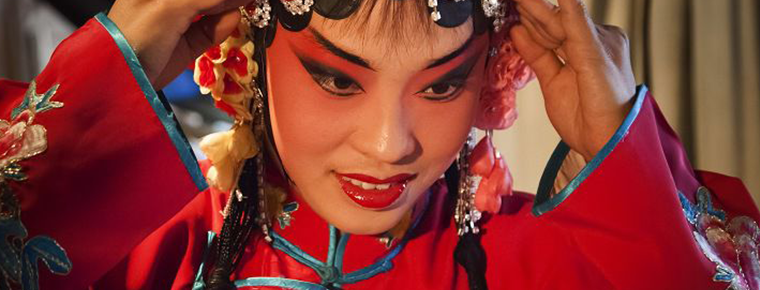
-
Nangong Scenic Spot
Located in Wangzou Town, Fengtai District, southwestern suburb of Beijing, Nangong Village, the village where the scenic spot is located, enjoys the reputation of "China's first geothermal villag.
Views: 165 Time 2018-12-27 -
rime island
Wuluo Island, an island on the Songhua River, is located in the Manchu town of Ura Street, Longtan District, Jilin Province. The villages of Hantun and Zeng Tongtun in Manchu Town of Ura Street are th.
Views: 186 Time 2019-02-25 -
Yangba Subtropical Ecotourism Scenic Area
Yangba subtropical eco-tourism scenic spot is located in Yangba Town, south of Kangxian Town, Longnan City, Gansu Province, 84 kilometers away from the county town.
Views: 173 Time 2019-03-02 -
Eight treasures taro
Babao taro paste is one of the local traditional sweet spots in Fujian cuisine. This dish is delicate, soft, sweet and delicious. It looks like a cold dish but burns its mouth. It has a unique flavor..
Views: 114 Time 2019-03-27 -
Wheat straw cut and paste
Straw clipping is a traditional folk handicraft. Also known as "wheat straw clipping", "wheat straw clipping". Using the natural luster of wheat straw and the characteristics of ru.
Views: 221 Time 2019-05-16 -
Quyang stone carving
Quyang stone carving is an important part of folk art in Quyang County, Hebei Province. Since the Western Han Dynasty, Quyang stone workers have used marble to carve steles and other objects. Quyang s.
Views: 262 Time 2019-06-11 -
Umbrella Making Skills
Oil-paper umbrella is one of the traditional handicraft products in China. As a kind of paper or cloth umbrella originating in China, it has also spread to various parts of Asia, such as Korea, Vietna.
Views: 215 Time 2019-06-12 -
Bronze drum dance
Tonggu dance is one of the most popular and influential ancient dances among the Zhuang and Yi people in Wenshan Zhuang and Miao Autonomous Prefecture of Yunnan Province. It is distributed in Zhuang a.
Views: 95 Time 2019-06-21 -
Ban Chao
Ban Chao (32 - 102 years), the word Zhong Sheng. Fufeng County Ping Lingxian County (now) Shaanxi People in Northeast Xianyang. Eastern Han Dynasty Famous time Militarist Diplomats, historian Ban Bi T.
Views: 224 Time 2019-09-06 -
An Zhongrong
An Zhongrong (- 942 years), Zi tie Hu, Shuozhou (now Shuozhou, Shanxi). The generals of the Five Dynasties and Ten Kingdoms during the late Tang Dynasty and the Late Jin Dynasty..
Views: 263 Time 2019-09-11 -
Chinese Qiang Museum
Qiang museum is a local ethnic Museum, located in the south of Qiangxing street in Maoxian county. It was officially opened in 1988 when the Qiang traditional festival "Qiang calendar year". It is the only Qiang Museum in China..
Views: 102 Time 2020-11-06 -
Yibin science and technology
In 2019, there are 34 new high-tech enterprises, 13 provincial science and technology achievements transfer and transformation demonstration enterprises, 2 provincial science popularization bases and 6 Municipal Science Popularization base.
Views: 314 Time 2020-12-18
